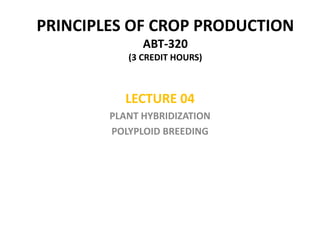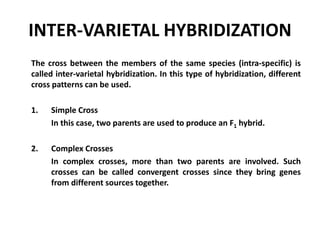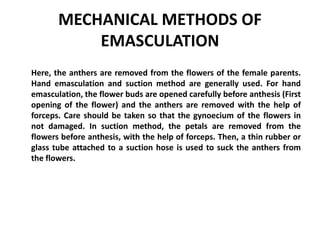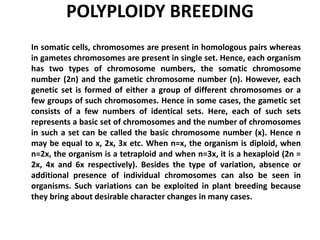Hybridization is the crossing of two plants to combine their genotypes. The objectives include combination breeding to transfer traits, transgressive breeding to create variations beyond parental limits, and producing hybrids with hybrid vigor. The process involves selecting parents, emasculating the female parent, bagging, tagging, pollinating, harvesting F1 seeds, and further handling plants. Polyploid breeding uses variations in chromosome number like polyploidy to induce trait changes. Haploids are useful for developing pure lines and aneuploids through chromosome doubling.




















